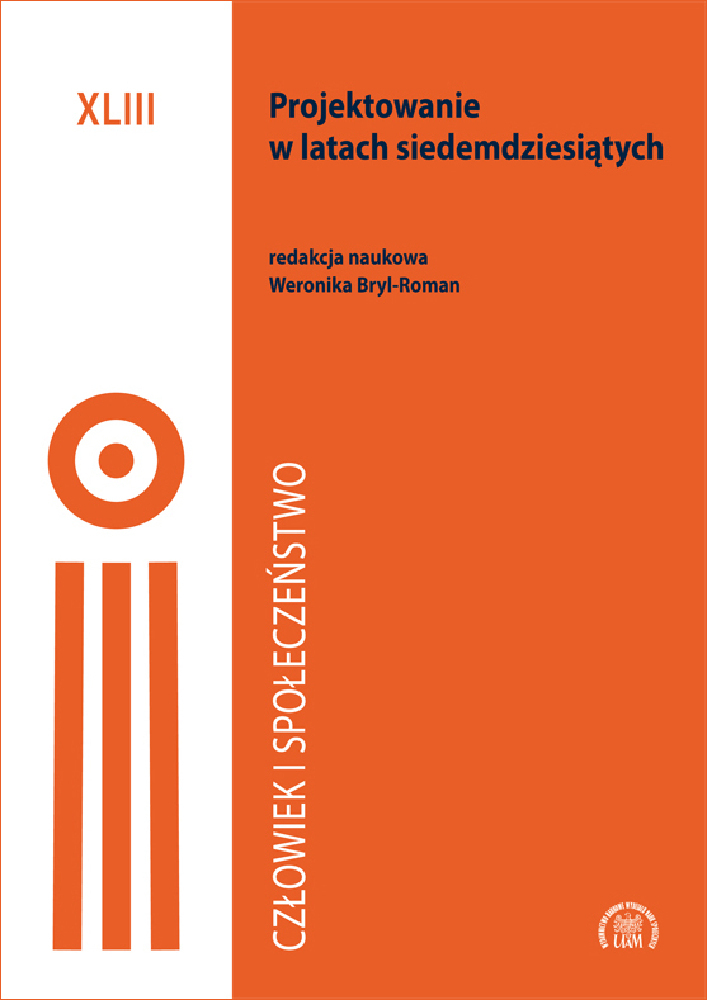Abstract
Polish artistic textiles of the second half of the twentieth century are an important part of European art. The 1960s and the beginning of the 1970s was the “golden age” of artistic textiles. The most important researcher in this field was Professor Irena Huml who had published such works as: “Polish Applied Arts” and “Contemporary Polish Textiles”. As a result of the development of Polish textiles in the post-war era, the division of pure art and utilitarian art ceased to exist. The role of designer and the role of craftsman coexisted in the Polish artist during the time as capital restraints forced the designer-craftsman to experiment, something unique to Poland and not seen in other capital-rich countries. The blending of these roles – designer and craftsman – propelled Polish art to the top. Biennale Internationale de la Tapisserie was the most important textile event in Europe for the development of artistic textiles. An analysis of these exhibitions could help generate a general view of this field of art. The 1970s was underestimated because of quantity of phenomenon in the textile field: the organization of outdoor weaver workshops, the collaboration with the biggest Polish companies, Orbis and Lot for example, and, finally, the creation of a new type of artistic textiles: miniatures. Given that Polish artistic textiles of the 1960s and 1970s are underestimated and rarely researched, this study can be interesting and provide topics for original investigation.
Julia Błaszczyńska, Polska tkanina artystyczna i użytkowa drugiej połowy XX w. ze szczególnym uwzględnieniem lat 70. [Polish artistic and utilitarian fabric of the second half of the twentieth century, with particular reference to the 1970s], edited by W. Bryl-Roman, „Człowiek i Społeczeństwo” vol. XLIII: Projektowanie w latach 70. [Designing in the 1970s], Poznań 2017, pp. 145-164, Adam Mickiewicz University. Faculty of Social Sciences Press. ISSN 0239-3271.
References
Huml I., Polska Sztuka Stosowana XX wieku, Wydawnictwa Artystyczne i Filmowe, Warszawa19 78.
Huml I., Współczesna tkanina polska, Arkady, Warszawa 1989.
Jachuła M., Kowalewska M. (red.), Splendor tkaniny, Zachęta, Warszawa 2013.
Korduba P., Ludowość na sprzedaż, Fundacja Bęc Zmiana, Warszawa 2013.
Kowalczyk I., Matki-Polki, Chłopcy i Cyborgi. Sztuka i feminizm w Polsce, Galeria Miejska Arsenał, Poznań 2010.
Read H., Sztuka a przemysł, Państwowe Wydawnictwo Naukowe, Warszawa 1964.
Rottenberg A., Sztuka w Polsce 1945–2005, Stentor, Warszawa 2005.
Sztuka Świata, t. 10, red. nauk. tomu: W. Włodarczyk, Arkady, Warszawa 1996.
Wróblewska D., Lausanne 71, „Projekt” 6/1971.
Wróblewska D., Tkactwo Wojciecha Sadleya, „Projekt” 3/1963.
Wróblewska D., Lausanne 6, „Projekt” 5/1973.
Wróblewska D., Tkanina w Lozannie, „Projekt” 6/1975.
Wróblewska D., Tkaniny w Lozannie, „Projekt” 5/1977.
Wróblewska D., Konkurs w Lozannie, „Projekt” 5/1979.
License
1. W momencie złożenia pracy celem rozpoczęcia postępowania w sprawie publikacji, Licencjodawca, zwany dalej Autorem, akceptuje wszystkie zasady umieszczone na stronie internetowej czasopisma “Człowiek i Społeczeństwo”, udzielając Licencjobiorcy, zwanego dalej Wydawcą, niewyłącznej i nieodpłatnej licencji na korzystanie z Utworu. Licencja zakłada tym samym brak ograniczeń terytorialnych, czasowych oraz ilościowych na następujących polach eksploatacji (art. 50 ustawy z dnia 4 lutego 1994 r. o prawie autorskim i prawach pokrewnych):
a. utrwalanie Utworu;
b. zwielokrotnienie Utworu drukiem i w wersji cyfrowej;
c. wprowadzenie do obrotu, użyczenie lub najem oryginału/zwielokrotnionych egzemplarzy Utworu;
d. publiczne wykonanie, wystawienie, wyświetlenie, odtworzenie oraz nadawanie i reemitowanie, a także publiczne udostępnianie Utworu w taki sposób, aby każdy mógł mieć do niego dostęp w miejscu i w czasie przez siebie wybranym;
e. włączenie Utworu w skład utworu zbiorowego;
f. wprowadzenie Utworu w postaci elektronicznej na platformy elektroniczne lub inne wprowadzenie Utworu w postaci elektronicznej do Internetu, Intranetu, Extranetu lub innej sieci;
g. rozpowszechnianie Utworu w wersji elektronicznej w Internecie, Intranecie, Extranecie lub innej sieci, w pracy zbiorowej, a także samodzielnie w formule Open Access w oparciu o licencję Creative Commons Uznanie autorstwa 4.0 Międzynarodowa Licencja Publiczna (CC BY 4.0), a także inną wersję językową tej licencji, lub którąkolwiek późniejszą wersję tej licencji.
2. Założenia licencji Creative Commons Uznanie autorstwa 4.0 Międzynarodowa Licencja Publiczna (CC BY 4.0), udzielają Wydawcy upoważnienia do kopiowania, zmieniania, rozprowadzania, przedstawiania i wykonywania Utworu jedynie pod warunkiem uznania autorstwa.
3. Wraz z dostarczeniem Utworu, Autor zobowiązuje się do wypełnienia, podpisania oraz odesłania skanu umowy
